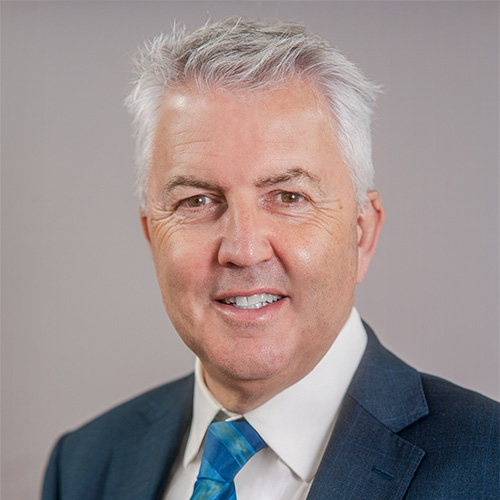Martin Gaffney, Vice President EMEA, Yugabyte, suggests that preparation is key to answer any probing net zero questions that will inevitably arise, and why relying on a hyperscaler’s operations isn’t enough to show greener impact.

Something big is on the horizon – a complex business and IT issue that you will need to confront head-on. It may already have been raised to some of you, and it’s an issue called, ‘What are you in IT doing to help the organisation’s net zero commitment?’
I recommend that you have an answer, a strategy, and even better, some hard metrics to evidence ongoing sustainability transition improvements and successes.
The problem here is that data centres – which includes the ones your CSP partners are delivering your multi-cloud on – don’t have brilliant PR when it comes to green (you may have seen this Panorama expose, ‘Is Cloud Damaging the Planet?’).
But even before we focused on our business carbon footprint, we knew excess heat and power costs in our data centres were an issue. To take advantage of things like low latency, we want to physically cite what we used to call ‘data hotels’ and ‘colocation services’ near the urban centres’ corporations tend to cluster in. That often means reusing brownfield sites, which is a good use of such places but a heavy power drain on the network, which is less green.
That’s because all those little boxes in racks generate a lot of spare heat that needs dealing with. The IT industry has tried to manage this using a variety of smart tricks and tools, including ambient air and local water as non-carbon generating free cooling and hot and cold aisle innovations.
Ultimately though, however you source it, data centres need electricity and IT devices generate heat. So, while we might dream of on-site zero-carbon power, we aren’t there yet; we can’t really stick all the world’s data centres in Greenland as many of us need to be in hot cities in the global south.
Like it or not, IT is unlikely to win any sustainability awards for some time yet. Our business colleagues – the ones asking the net zero question – won’t really be satisfied by that response. To flip the viewpoint for a second, neither will you be when you ask the same question of your suppliers.
Cloud (especially multi-cloud) is your green friend here
The good news is that you can source IT, even if it’s delivered to you via cloud, in a greener fashion than it would have been on-prem. While the cloud isn’t perfect (as we will illustrate), it’s much more power-efficient than running lots of machines in the basement (as we all did with on-prem).
In fact, public cloud vendors are getting better at being greener. Hyperscalers benefit from their economies of scale and energy efficient build principles. This includes massive use of low-power ARM chips, rather than the ones in off-the-shelf PCs; Amazon is deploying specialist Graviton3 processors in its public data centres, which it claims uses 60% less energy than X86 chips. In parallel, Google Cloud says its facilities are 1.5x more efficient than a typical enterprise data centre.
Therefore, if you’re using cloud and want to know how your service provider is reducing their carbon impact and optimising their internal operations, you may already have a good green IT answer.
One of our biggest partners is a major global financial services and banking sector ISV, called Temenos. It’s been deploying its highly popular core banking capabilities for clients on cloud using cloud native architecture and tools since 2011.
For the last couple of years, it’s been making our scalable PostgreSQL-compatible, cloud native, on-prem transactional data engine, YugabyteDB, available to those banking clients who choose to run Temenos open platform on their own infrastructure. This could be on their own public cloud instances, on-premises, or in their private or hybrid clouds.
Last year, Temenos introduced a new brand promise that any solution it brings to market will have less environmental impact than the previous version. It seems to be working. The latest version of the Temenos Banking Cloud provides a 32% carbon efficiency improvement at run time. Temenos has also developed a carbon emissions calculator to give its customers deeper insight into carbon emissions data associated with all consumption of Temenos Banking Cloud services.
Don’t just rely on your hyperscaler to do all the net zero heavy lifting for you
I believe that reporting on energy efficiency KPIs is going to increasingly become part of the CIO’s workload.
Cloud definitely isn’t perfect, and it’s far too easy for vendors and your own developers to just scale up and burn more machine cycles than needed when trialling systems. There’s still too much attitude of, ‘we’ve got loads of provision here, so I’ll just spin up 1,000 machines, use Apache Spark to process it overnight and we’ll be done when we all come in in the morning’. This is a viewpoint that businesses themselves will need to overcome.
This wasteful and thoughtless activity ultimately impacts the business. Even in the greenest CSP environment, more GHG is potentially being emitted as a result.
So, don’t just rely on your hyperscaler to do all the net zero heavy lifting. Even if multi-cloud is your most efficient and net zero way of working (for some applications at least), you need to take responsibility for your use of this ‘current account,’ and monitor and take necessary actions to minimise environmental cost.
The message here is that the ‘E’ in the whole environmental, social and corporate governance (ESG) drive is likely to be directly affected (and improved) by the data centre decisions you make. You need data in hand to show internal and external stakeholders and, importantly, your customers the positive steps you are taking and the impact this has.



